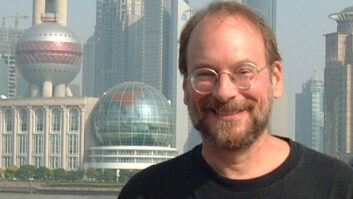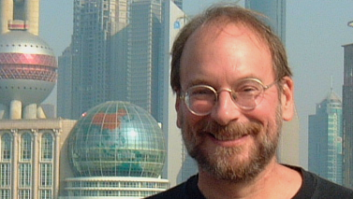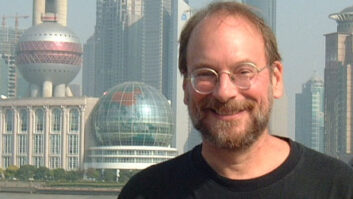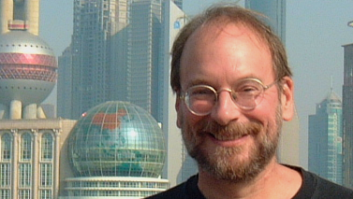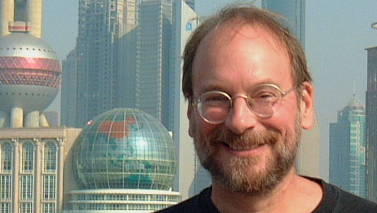
In the ’70s, Kodak—a company founded in 1880—was responsible for 85 percent of camera sales in the U.S., along with 90 percent of the film. It was a giant among companies, with revenues peaking at $16 billion in 1996.
You know how this ends, yes? Kodak continued to focus on photographic film, digital cameras took off, everyone had a camera in their smartphone, and Kodak went bankrupt. Case closed, right?
No, case not closed—because Kodak invented the digital camera. In 1975. But their culture killed it. According to the World Economic Forum, Steve Sasson, the digital camera’s inventor, told The New York Times, “It was filmless photography, so management’s reaction was, ‘That’s cute—but don’t tell anyone about it.’”
Kodak wanted to keep that secret expertise for themselves. And therein lies a lesson of potential interest to mastering engineers.
WHO’S THE MASTER?
As background, whenever I write something that encourages recording enthusiasts to try their hand at mastering, invective pours in from veteran mastering engineers. Maybe they master better than they read, because in parallel, I also tell anyone who will listen that if you have a mission-critical project and don’t have a ton of experience doing masters, don’t do it. Hire a professional.
“But Craig, I can master! I have a computer, righteous plug-ins, and even have software that uses AI to master for me! You’re just stuck in the past, when mastering engineers were gods!”
Craig Anderton’s Open Channel: Profiles in Gear Lust
When vinyl ruled the Earth, mastering engineers were locked in a pitched struggle with the laws of physics. Dragging a rock through yards of rotating plastic is a primitive way to reproduce music. Everything was a tradeoff. Levels, album durations, EQ, surface noise, the RIAA curve, lacquers, the vinyl itself…you had to be a cross between an alchemist, a physicist and a magician. This is why great mastering engineers attained— entirely justified—reputations of performing feats no mere mortals could. But that special status couldn’t last forever.
Then came digital. All those tradeoffs were no longer necessary. Amateurs could get away with doing incredibly tasteless sonic violence to a master. Plug-ins became so good that even self-proclaimed “golden ear”–types couldn’t tell the difference between hardware and software. Any home recording fan could master their own music…
From a technical standpoint. And only a technical standpoint. And not necessarily well.
AVOIDING THE KODAK MISTAKE
I’ve spoken to a few veteran mastering engineers who feel lost. Their expertise acquired during vinyl’s heyday is a quaint relic of a bygone era, for a niche market. Like Kodak, they jealously guarded their techniques and their status. But today, people can get their songs mastered online by “professionals” (cough, cough) for a few dollars, or by a machine for even less. And let’s be fair: Often, what comes back sounds better than the original, so the customer is satisfied.
Consider Kodak, which had the secret ingredient sitting in its R&D lab that was needed to transition successfully into a new world. But management kept thinking that their expertise would take decades to become irrelevant. Everybody will need film, right?
Well, pro-level mastering engineers do have the secret ingredient needed to transition into a new world: Experience with the artistic, not just the technical, side of mastering. No AI plug-in can claim the ability to make artistic decisions—because it can’t.
When a plug-in says, “Dude, that guitar part in the intro is kinda self-indulgent, you really should splice out four of those eight measures,” then I’ll give it credit for making an artistic decision. Or when it says, “If you add some subtle tempo variations in the section around 1 minute that’s mostly drums, you can really make that song breathe when the chorus starts.” But it can’t. Good mastering engineers know what technology can do to serve the art, not just improve the audio quality.
THINKING TECHNOLOGY, TALKING ART
I’ve done a lot of mastering. Sometimes, it’s about subtle changes. Sometimes, it’s waveform surgery that virtually remixes the two-track. All artistic decisions are made in partnership with the artist. Every time, the artist is grateful for an artistic viewpoint. It proves to them (and their budget) that mastering is more than just EQ, dynamics and imaging. Musical decisions can be a crucial part of the mastering process. No plug-in does that.
But how do we convey this to a world so smitten by technology that it confuses the tools with the art? As an industry, we need to make the public aware that technology can only be an assistant engineer—perhaps a good one, but an assistant nonetheless. (Props to iZotope for calling its AI-driven software “assistants.”)
Kodak coined the phrase “Kodak Moment,” about capturing a point in time with a picture. But we need to remember the other “Kodak Moment” that bankrupted the company—a failure to see that the future was hidden in plain sight, in its very own R&D labs, while the brain trust prioritized holding on to the proprietary nature of the past.
Yes, a mastering engineer with a command of technology remains important. But now the technology is available to everyone, so it’s easy to understand why some people don’t think being a mastering engineer is such a big deal. It’s just about technology, right?
No, and so I think it might be time to retire the term “mastering engineer.” What’s far more important is the perspective of a mastering artist—backed by years of experience and a stellar set of ears.
